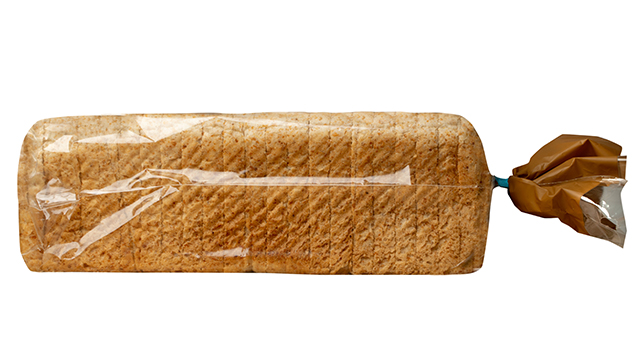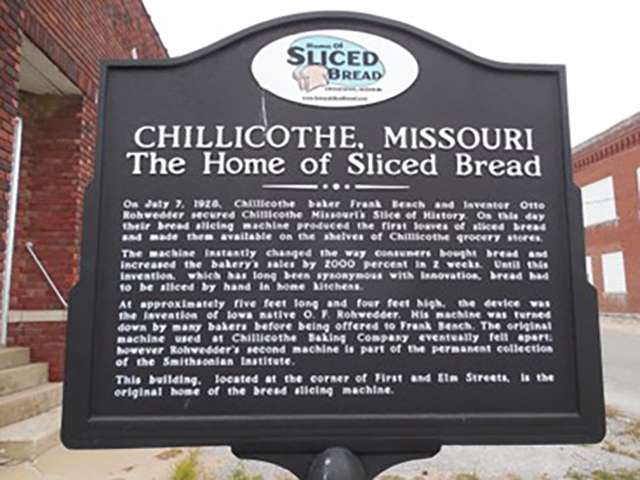THE BEST THING SINCE SLICED BREAD

A phrase that was often used when I was growing up to describe something new and impressive was “it’s the best thing since sliced bread”. This idiom came from an advertising slogan used in 1928 by the Chillicothe Baking Company from Missouri USA, the first company to sell sliced bread using a newly invented bread-slicing machine and wrapped to preserve freshness. It was front page news in the local newspaper and the company’s ad on the back page called it “the greatest step forward in the baking industry”. Customers loved this innovation too. The rest, as they say, is history.

Innovation has continued with this nutritious core-food staple and the diversity within the supermarket bread category is amazing: white, wholewheat, wholegrain, added seeds, added legumes, low GI, higher-protein, gluten-free, higher-fibre, different grains and flours (rye, oat, barley, corn), fruit bread, flatbreads, sourdough, added prebiotics, thick or thinly sliced, and no preservatives. Healthier bread options are widely available and there really is a packaged sliced bread for everybody. Dietary guidelines around the world include sliced bread in the ‘grains’ food group to enjoy daily as a source of energy, protein, B-vitamins and minerals. Consuming wholegrain options within this group-foods in which all parts of the grain are present is associated with reduced risk of chronic disease (1).
Recently however the nutritional value of sliced bread has been tarnished by the advent of the NOVA classification system and the categorisation of sliced bread in the NOVA Group 4 ‘Ultra-processed foods’. This system demotes all foods that have undergone commercial food processing and rather unscientifically assesses foods on how they are made and by whom, rather than their nutritional content. NOVA ultra-processed foods (UPFs) are the latest dietary villain. Researchers have looked for associations between UPF consumption and ill-health and found them. Not surprising when you consider UPFs include the less-healthy foods such as biscuits/cookies, cakes, confectionery, processed meats and soft drinks. But perhaps less logical is the fact that the NOVA UPF category includes healthy, core foods such as sliced bread, breakfast cereals and flavoured yoghurts.
A new study published The Lancet Regional Health (2) is finding holes in the ‘all UPFs are bad’ theory. In a new analysis of the huge Harvard US cohorts of around 200,000 nurses and other health professionals, researchers found several foods classified by NOVA as UPFs were associated with a reduced risk of cardiovascular disease. That is, eating these foods was protective. Including sliced bread, breakfast cereals, yoghurts and dairy desserts and some savoury snacks (including popcorn and crackers). Wholegrain bread has also been associated with a reduced risk of type 2 diabetes (3).
What can we take from this? The NOVA system is not quite on track to steering us toward a healthier diet in our modern and diverse food environment. You can rely on what you already know. Eat mostly bread, not cookies, and more breakfast cereals than cake. Bread can be a healthy food whether you bake it yourself or buy it in a packet. Wholegrain is best for the extra fibre and nutrients it offers. Look for salt-reduced bread if high blood pressure is an issue. Top it and fill-it with a variety of nutritious core foods including healthy fats, lean meats, fish, eggs, cheese, nuts, seeds, vegetables and fruit. Don’t waste it. Stale bread can be used to make toast, breadcrumbs (freeze them for later), croutons for soups and salads, French toast, bread-pudding and ‘toasties’.Toasties are the UK and Australian version of the US ‘grilled cheese’, and great for re-inventing leftovers such as roast meats, Bolognese sauce or Mexican beef and beans. And they can be sweet by including banana and peanut butter, or apple, walnuts and cinnamon.
| Wholemeal sliced bread | |
| 4 Health Stars | |
| Glycemic index (range) | 50-71 |
| Serving size – 1 slice (24g or ~1 Ounce) | |
| Kilojoules | 230 |
| Calories | 55 |
| Protein (g) | 2.3 |
| Fats (g) – total | 0.6 |
| Includes: – Saturated fat (g) | 0.1 |
| – Monounsaturated fat (g) | 0.2 |
| – Polyunsaturated fat (g) | 0.2 |
| Saturated : unsaturated fat ratio | 0.25 |
| Carbohydrates (g) – Total | 10.6 |
| Available (Includes): | 9.1 |
| –Natural sugars (g) | 0.0 |
| –Natural starches (g) | 8.6 |
| –Added sugars (g) | 0.5 |
| –Added starches (g) | 0.0 |
| Unavailable (Includes): | 1.5 |
| –Dietary fibre (g) | 1.5 |
| Sodium (mg) | 115 |
| Potassium (mg) | 50 |
| Glycemic load (g) | 4.5-11 |
| Diabetes exchanges | 1 |
| Ingredients: Wholemeal Wheat Flour, Water, Yeast, Vinegar, Wheat Gluten, Canola Oil, Iodised Salt, Fermented Wheat Flour, Soy Flour, Malted Barley Flour, Vegetable Emulsifiers (471, 481, 472e), Vitamins (Thiamin, Folic Acid). |
- Aune and colleagues. Whole grain consumption and risk of cardiovascular disease, cancer, and all cause and cause specific mortality: systematic review and dose-response meta-analysis of prospective studies. BMJ, 2016
- Mendoza and colleagues. Ultra-processed foods and cardiovascular disease: analysis of three large US prospective cohorts and a systematic review and meta-analysis of prospective cohort studies. The Lancet Regional Health – Americas, 2024.
- Chen and colleagues. Ultra-processed food consumption and risk of type 2 diabetes: three large prospective U.S. Cohort studies. Diabetes Care. 2023.








